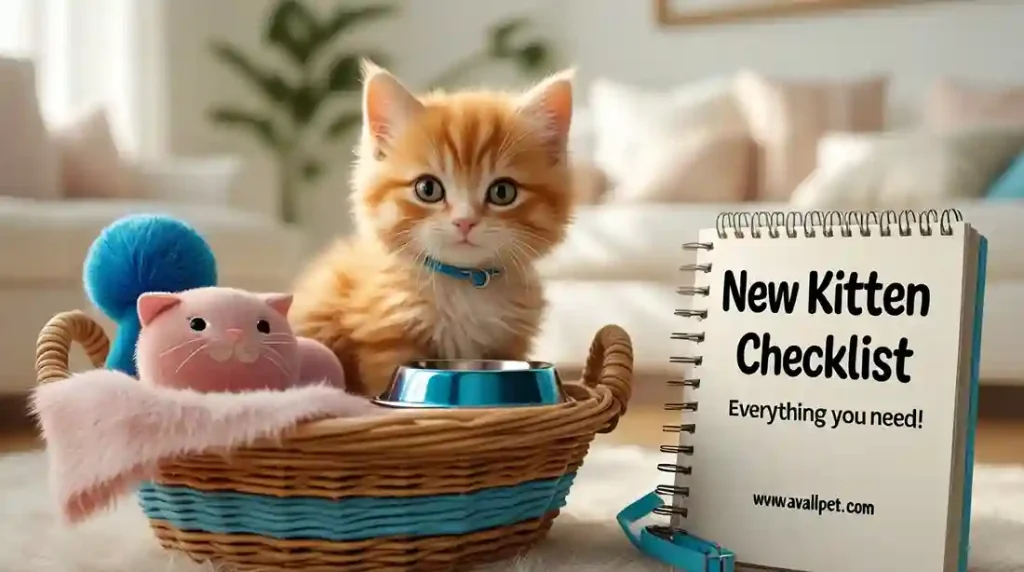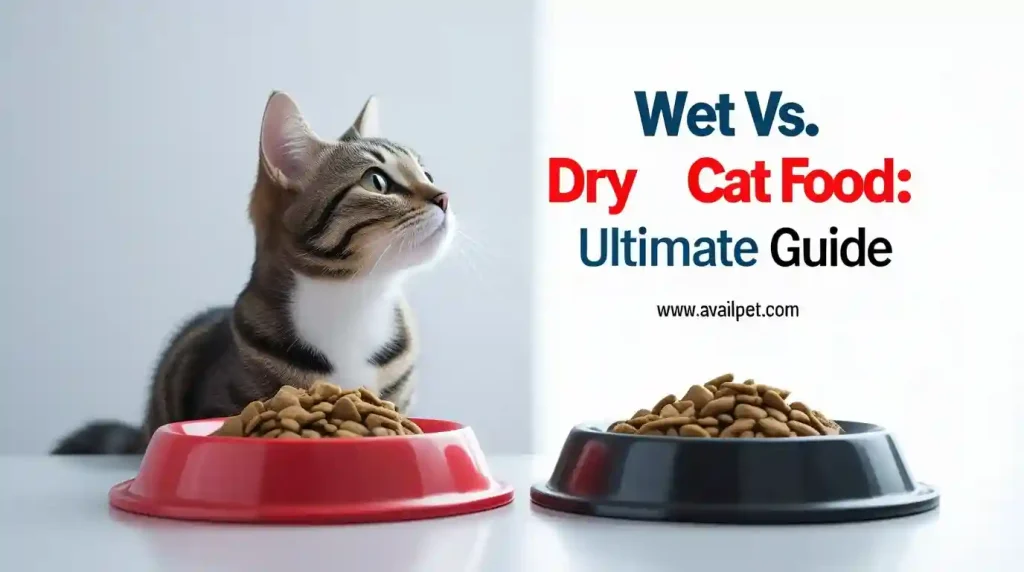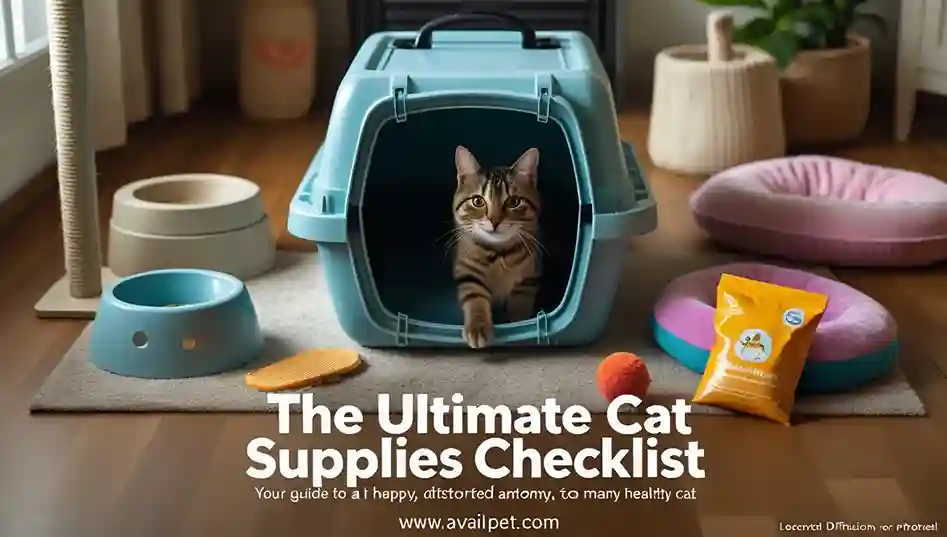🔑 Key Takeaways: Feline Calicivirus
- What it is: A highly contagious respiratory virus in cats.
- Common Symptoms: Sneezing, nasal/eye discharge, mouth ulcers, lethargy.
- Unique Symptom: Some strains cause sudden, painful limping (limping syndrome).
- Action Plan: Requires veterinary care; treatment is supportive (fluids, nutrition). Vaccination is key for prevention.
Introduction: Beyond the Common Cat Cold
A sudden sneeze from your cat might not raise alarm, but when it’s followed by painful-looking mouth ulcers, a sudden limp, or a complete loss of appetite, it’s time to pay close attention. What may appear to be a simple cold could actually be Feline Calicivirus (FCV), a highly contagious and complex viral infection that is a leading cause of upper respiratory disease in cats worldwide.
Understanding calicivirus is crucial because its symptoms extend far beyond the typical sneeze. This guide, developed with veterinary expertise, will walk you through the five critical symptoms you need to recognize—from the well-known respiratory signs to the lesser-known but telling signs like limping and oral ulcers. Our goal is to empower you with the knowledge to seek timely veterinary care and provide the supportive treatment your cat needs for a full recovery.
What is Feline Calicivirus (FCV)?
Feline Calicivirus (FCV) is a highly contagious virus that is one of the primary causes of upper respiratory infections (URIs) in cats. It’s not a single, simple bug but rather a virus with multiple strains, which explains why symptoms can vary so significantly from one cat to another.
The virus is remarkably resilient and can survive on surfaces in your home—like food bowls, bedding, and furniture—for up to a month. This makes it a persistent threat, especially in multi-cat households, shelters, or catteries.
How is it spread?
FCV spreads easily through direct contact with an infected cat’s:
- Saliva and nasal discharge
- Eye discharge
- Aerosol droplets from sneezes
It can also be transmitted indirectly through contaminated objects (like your hands or clothing) or environments. It’s important to note that while most cases are manageable, a more severe and rare strain, Virulent Systemic Feline Calicivirus (VS-FCV), can cause severe systemic illness. However, this outline will focus on the common, classic presentation of the virus that most cat owners will encounter.
The 5 Critical Symptoms of Feline Calicivirus
Feline Calicivirus can present in several ways, but there are five key symptom categories every owner should recognize. Some cats may show only one or two signs, while others experience a combination.
1. Upper Respiratory Signs (The “Cat Cold”)
These are the most common initial symptoms that often mimic a cold:
- Sneezing: Frequent, repeated sneezing fits.
- Nasal Discharge: Runny nose that may start clear and become thick and pus-like.
- Ocular Discharge: Watery or thick discharge from the eyes.
- Congestion: You may hear your cat breathing noisily or see them breathing with an open mouth.
2. Oral Ulcers (A Hallmark Sign)
This is one of the most distinctive features of FCV and a major cause of pain:
- Painful Sores: Ulcers typically appear on the tongue, gums, lips, and hard palate.
- Excessive Drooling: Due to the pain from the mouth ulcers.
- Loss of Appetite: Your cat may approach food but refuse to eat because it’s too painful to chew or swallow.
3. Lethargy and Fever
As the immune system fights the virus, systemic signs appear:
- Profound Lethargy: Your cat may sleep more, hide, and show no interest in play or interaction.
- High Fever: A general feeling of being unwell, often with a warm nose and ears to the touch.
4. Limping Syndrome (A Surprising Sign)
Some FCV strains cause a unique symptom that often puzzles owners:
- Sudden Lameness: A painful, often shifting limp that can appear without any history of injury.
- Joint Inflammation: The virus can cause temporary inflammation in multiple joints, making movement painful.
- Recovery: This lameness is usually temporary and resolves as the viral infection is cleared.
5. Loss of Appetite and Dehydration
This is a dangerous consequence of the other symptoms:
- Anorexia: The combination of mouth pain, congestion (which affects smell), and general malaise leads to a refusal to eat and drink.
- Dehydration: This can set in quickly, especially in kittens, and is a serious medical concern. Signs include dry gums, loss of skin elasticity, and weakness.
If your cat is showing any combination of these symptoms, especially refusing food and water, it is time to contact your veterinarian.
Diagnosing and Treating Feline Calicivirus
If you suspect your cat has calicivirus, a veterinary visit is essential. There is no single cure for the virus itself, but prompt and supportive care is critical for helping your cat’s immune system fight off the infection and prevent secondary complications.
How Vets Diagnose FCV
A diagnosis is typically made based on a combination of factors:
Clinical History & Symptoms: Your vet will ask about your cat’s symptoms, vaccination status, and potential exposure to other cats.
Physical Examination: The vet will look for the tell-tale signs, such as oral ulcers, nasal/ocular discharge, and fever.
PCR Testing: In some cases, a polymerase chain reaction (PCR) test may be used. This involves taking a swab from the cat’s mouth, nose, or eyes to confirm the presence of the calicivirus genetic material. This is especially useful in multi-cat environments or for severe cases.
Supportive Care and Treatment
Since there is no direct antiviral drug for FCV, treatment focuses on supportive care to keep your cat comfortable and nourished while their immune system does its work.
Fluid Therapy: This is often the most critical part of treatment, especially if your cat is dehydrated from not drinking. For cats receiving subcutaneous fluids at home, a BD Ultra-Fine Insulin Syringe can provide precision dosing, though you should always follow your vet’s specific instructions.
Appetite Stimulation & Nutritional Support: Encouraging eating is vital. Your vet may prescribe appetite stimulants and recommend strongly-scented, soft, palatable foods. Heating up Weruva Wx Phocus Focus wet food can enhance its aroma, making it more enticing for a congested cat.
Pain Management: Pain relief is important for cats with mouth ulcers and limping. Always use only vet-prescribed pain medication, as many human pain relievers like acetaminophen and ibuprofen are toxic to cats.
Antibiotics: While antibiotics do not work against the virus itself, they are often prescribed to prevent or treat secondary bacterial infections.
Supportive Home Care: Your vet may recommend using a cool-mist humidifier to ease nasal congestion and gently wiping away nasal and ocular discharge with a soft, damp cloth to keep your cat comfortable.
Preventing Feline Calicivirus: Vaccination and Hygiene
While Feline Calicivirus is widespread, you are not powerless against it. A proactive approach centered on vaccination and strict hygiene is the most effective way to protect your cat.
The First Line of Defense: The FVRCP Vaccine
The core FVRCP vaccine is your cat’s primary shield against Calicivirus. The acronym stands for Feline Viral Rhinotracheitis (caused by FHV-1), Calicivirus, and Panleukopenia.
- How it Works: While the vaccine may not always prevent infection entirely, it is highly effective at reducing the severity of symptoms. A vaccinated cat exposed to FCV is far more likely to experience a mild, manageable case rather than a severe, life-threatening illness.
- Kitten Series & Boosters: Adherence to the full vaccination schedule is critical. Strategic Internal Link: For a detailed timeline, see our vet-reviewed Kitten Vaccination Schedule: A Complete Guide. Adult cats require regular booster shots as recommended by your veterinarian to maintain immunity.
Managing the Environment in Multi-Cat Homes
If one cat is diagnosed with FCV, immediate action is needed to protect others. The virus can survive on surfaces for weeks, so a thorough cleaning protocol is essential.
Isolate the Sick Cat: Provide them with their own room, food bowls, water bowls, and litter box. A MYPET North States Paws Portable Pet Gate can help create a safe separation while allowing for airflow.
Practice Meticulous Hygiene: Wash your hands thoroughly with soap and water after handling the sick cat. For added protection, keep a bottle of vet-recommended antiseptic hand spray outside the isolation room for quick disinfection.
Disinfect Thoroughly: FCV is resistant to many common disinfectants. Use a bleach solution (1 part bleach to 32 parts water) or a commercial disinfectant proven to kill calicivirus. Clean all surfaces, stainless steel food and water bowls which are less porous and easier to disinfect, and litter boxes the infected cat has contacted.
Prevention is always better than treatment. By ensuring your cat is vaccinated and maintaining a clean environment, you significantly lower their risk of suffering from this common and uncomfortable virus.
Feline Calicivirus FAQs
How long does feline calicivirus last?
The acute phase of the illness, where symptoms are most severe, typically lasts for 7 to 10 days. However, many cats become “carriers” after recovery, meaning they may harbor the virus for months or even years, potentially shedding it intermittently and showing mild, recurring symptoms, especially during times of stress.
Can an indoor cat get calicivirus?
Yes, absolutely. While the risk is lower than for outdoor cats, the virus can be brought into your home on your shoes, clothing, or hands after contact with an infected cat or a contaminated environment. This is why vaccination is considered essential for all cats, regardless of their lifestyle.
Is feline calicivirus contagious to other cats or humans?
- To other cats: Yes, it is highly contagious to other felines. Direct contact with saliva, nasal discharge, or contaminated objects is the primary mode of transmission.
- To humans or dogs: No, Feline Calicivirus is not zoonotic. It is species-specific and poses no health risk to humans, dogs, or other non-feline pets.
How can I disinfect my home from calicivirus?
Due to the virus’s resilience, effective disinfection is key. A diluted bleach solution (1 part household bleach to 32 parts water) is one of the most reliable methods. Allow it to stay on surfaces for at least 10 minutes of contact time before rinsing. You can also use commercial disinfectants specifically labeled as effective against calicivirus. Wash all bedding and soft materials in hot water.
Conclusion: Knowledge is the Best Medicine
Feline Calicivirus is a common and highly adaptable virus, but understanding its wide range of symptoms—from the classic respiratory signs and painful mouth ulcers to the surprising symptom of limping—empowers you to act quickly. Recognizing these signs and seeking prompt veterinary care is the first and most crucial step toward a successful recovery for your cat.
Remember, while there is no direct cure, supportive care from your veterinarian, including fluids, nutritional support, and pain management, provides your cat’s immune system with the best chance to fight the virus. Ultimately, prevention through regular FVRCP vaccination remains the most powerful tool you have to protect your cat, significantly reducing the severity of illness if they are ever exposed.
By staying vigilant, prioritizing preventative care, and trusting professional veterinary advice, you can confidently navigate a calicivirus diagnosis and ensure your cat continues to live a happy, healthy life.
Sources






